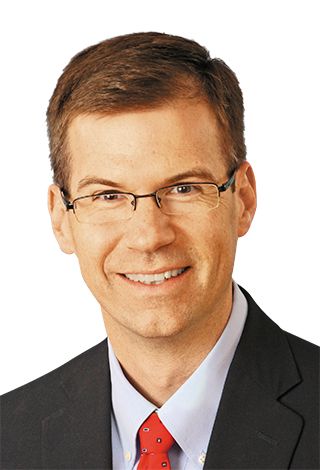Article
Resident education studies reveal fascinating trends
Author(s):
"When almost 80% of practicing urologists report that there is much more administrative workload in practice versus training and yet only 23% of residents expect this, that is a problem," writes Henry Rosevear, MD.
s_l - stock.adobe.com


Dr. Rosevear is a urologist in community practice in Colorado Springs, CO. Urology Times blogs present opinions, advice, and news from urologists and other urology professionals. Opinions expressed by bloggers are their own, and do not necessarily reflect the views of Urology Times or its parent company, MJH Life Sciences.
I used to read a lot of journals. As a resident, I prided myself on the number of journals I read every month. Not only did I read the “common” journals like Journal of Urology, European Journal of Urology, and Urology, I even read the Journal of Pediatric Urology and the Journal of Sexual Medicine. Why? It was probably the dork in me, but I can assure you that there is no better way to make an attending surgeon smile than to quote a recent article that she co-authored.
For several months after leaving residency, I continued my journal reading habits until one day when I was reading an article about current trends in the surgical repair of exstrophy that I had an epiphany-something akin to St. Paul’s moment on the road to Damascus. I realized that I had about as much business treating exstrophy as I did doing open heart surgery. Over the next few years, I transitioned to simply skimming the table of contents of the major journals every month, and it had been a very long time since I read a journal cover to cover.
Also by Dr. Rosevear - Moral Injury: A better model for understanding burnout
Until recently. The May 2019 edition of Urology was mostly devoted to the state of resident education in urology. It makes for fascinating reading. Residents are the future of our field, they are our future partners, and just as important, one of today’s residents will likely end up being my urologist.
What specifically was so fascinating?
Let’s start with Silvestre’s article on resident’s experience in pediatric urology (Urology 2019; 127:24-9). I’m the first to argue that, in the real world, those of us who don’t do pediatric cases on a regular basis should not be doing these cases, and most practicing urologists would willingly give up our pediatric privileges in return for not having to answer questions about pediatrics on our board exam. So I was pleasantly surprised to learn from this study that the number of cases that residents report doing is well above the minimum set by ACGME.
This may simply mean that the ACGME’s requirements are too low or that there are issues with the number of cases being reported, but at least everyone is getting exposure to these cases and, given that even small-town urologists do occasionally encounter congenital variations in genitourinary anatomy, this is likely a good thing. That said, neither I nor any other small-town urologist should ever touch a patient with exstrophy.
Next:"None of us went into medicine to do paperwork"Another interesting article was Cheng’s evaluation of resident expectations on administrative work in the real world as compared to residency (Urology 2019; 127:42-8). I find this article fascinating because I think it may help to explain the problem with burnout we are facing. None of us went into medicine to do paperwork. Further, one of the drivers of burnout seems to be the disparity between what we expect our job to entail and what it actually entails. As such, when almost 80% of practicing urologists report that there is much more administrative workload in practice versus training and yet only 23% of residents expect this, that is a problem.
Many residents I know, especially those who graduate from very surgery-heavy resident programs, have no idea the number of clinic patients you have to see to generate a case, the volume of computer work it takes to run a clinic, or the added non-clinical committee work that is expected of urologist both by their practices and the hospitals in which they work. It may help the future mental health of our community if residents are a bit more informed as to what to expect once they graduate.
Read: Addressing dangers in the OR starts with education
The last article worth highlighting is Shantharam’s article on the prevalence of underrepresented minorities in urologic residencies (Urology 2019; 127:36-41). Some background is important. According to AUA Census data, approximately 3% of the current work force in urology has an underrepresented minority background (defined as any of Asian or Pacific Island, Hispanic, Black, Native America/Alaska or Other), yet these groups represent over 30% of the American population. Further, diversity is more than just a catchphrase; the editorial comment associated with the article points quotes The Harvard Business Review as support on the increased effectiveness of diverse teams.
With that in mind, I was at first pleasantly surprised to see that for the period of 2012-2017, approximately 30% of our trainees come from an underrepresented background. By comparison, though, that is 9% less than among general surgery residents and 37% less than among all other medical fields. While the future of the urologic work force is certainly more diverse than the current 3%, we certainly have a long way to go before catching up with other fields.
















